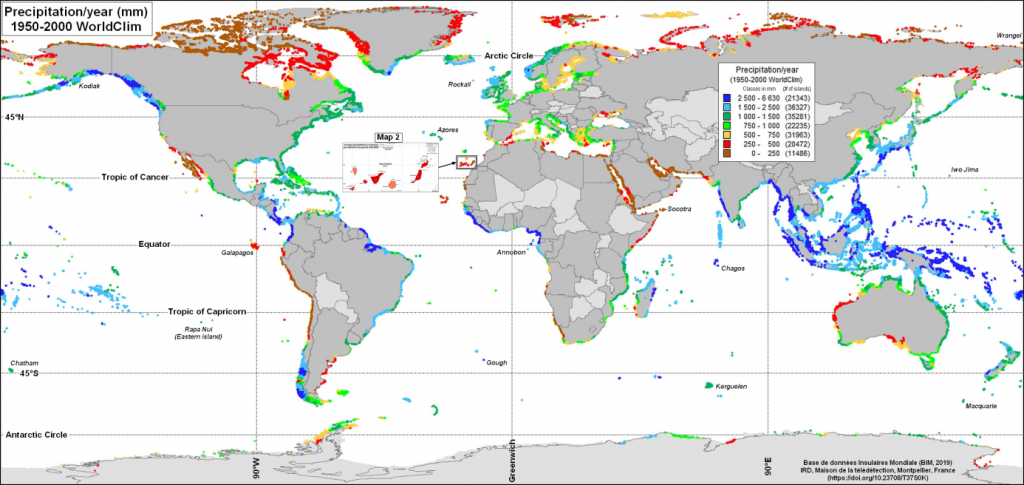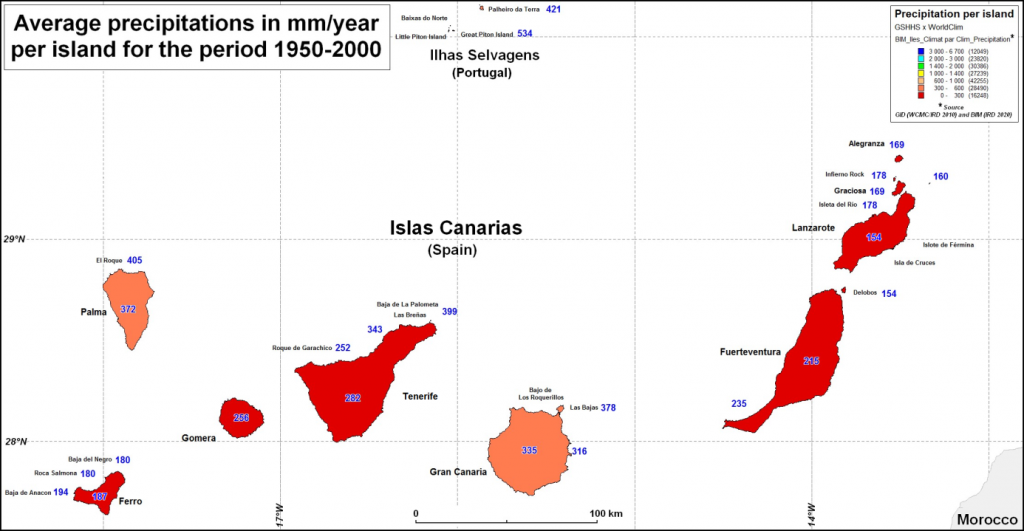Island space and health issues are linked. In a diminutive place, it is all the more possible to confine the populations concerned as it is easier to identify infectious, if not contagious, outbreaks. “Cutting off the relationship between bodies in order to cut off the disease within imposed limits: these two conditions, of cutting off and enclosure, have been fulfilled[1] ” by a geography of fragmentation of the islands to which a double strategy has been roughly matched. Either exclusion banishes the leprosy patient from a space to be purified, or inclusion proceeds by isolating the plague patient within a space to be controlled2 . Leprosy: move away to remove; plague: remove to intern. Such is the insularisation practised from the continent. Contain in a naturally circumscribed environment.
Half of the lazarettos designed to protect against the plague in Europe were islands3 . In 1377, the first historical quarantine took place on the islet Mrkan (Adriatic), before moving to another islet in front of Dubrovnik in 1430 and then to an island called Lokrum. In 1423, Venice already had a settlement on the islet of Santa Maria di Nazareth, to which was added a lazzareto nuovo (1468), then another on the island of Poviglia. Lazarettos under Venetian authority existed in Cephalonia and Corfu (on an islet near the city). In Livorno, a sanitary control was set up on the islet of Fanal in 1582. In the port of Ancona, a pentagon built on the water gave the lazaretto the appearance of an artificial island. Naples has its own on the islet Coppino next to Nisida (an island where only “observation” facilities are located). Still in a position of double insularity, the islet Manoel to the north of Valletta in Malta, or the islet of quarantine in Menorca, before the digging of a canal which had the effect of changing the peninsula of San Felipet (Mahón) into an island where a second lazaretto stands (similarly in Trieste: a canal isolates a lazaretto from the city). Not even the lazaretto of Kostajnica is located on an island (admittedly a river island) on the border between Bosnia and Croatia. Marseille has two quarantines: one on Île Jarre for ships in “gross patente” (infected), the other, ordinary, in Pomègues (Frioul archipelago), where the Grand Saint-Antoine from plague-stricken Syria was about to decimate the city in 1720. The great sanitary turning point in Europe, after the plague pandemics, was the eruption of yellow fever and cholera, for which new island facilities were built: Caroline Hospital on the islands of Frioul (Ratonneau Island), Sanguinaires (Ajaccio), Hyères (Porquerolles and Bagaud), San Antonio (Sicilian port of Trapani), Asinara (Sardinia), Ayios Nikolaos (Cyclades)4 … A sanitary cordon is deployed on the Atlantic coast: at Saint-Vaast-la-Hougue (Tatihou islet), Le Havre (islet du Hoc), Brest (Trébéron
island), Lorient (Saint-Michel island), Rochefort and La Rochelle (Aix island).
In the colonies, where the new tropical epidemiology partly originated, leprosy and plague crossed paths with yellow fever. In Saint-Domingue, in 1712, the authorities hesitated to banish twenty or so families to the island of Tortue on account of leprosy, before changing their minds. In Guadeloupe, lepers were sequestered on Désirade between 1728 and 1958. The first documents relating to Guianese lepers date back to 1818. Forty slaves were interned on the Îlet la Mère, then transferred to one of the islands of Salut (Royale), and from there, moved to a tributary of the Mana, the Acarouany. The question of what to do with colonial lepers was coupled with another one, in the wake of the abolition of slavery: just as a distinction was made between free and slave patients (in other words, whites, who were for the most part exempted from sanitary confinement, and blacks, who were in principle interned), regulations now distinguished between two categories of lepers, those from the free population and those from the penal “element” introduced by the convicts of French Guiana and New Caledonia. The latter were in fact under the sole control of the prison administration. In French Guiana, they were sent to the island of Saint-Louis du Maroni. The lepers in New Caledonia were sent to Nou Island, not far from the penitentiary, then to Art Island (Belep archipelago) and to Goat Island, before being sent to the Ducos peninsula near Nouméa. Melanesian lepers from the Loyalty archipelago are interned on Dudun Island (Maré Island). The difference, ethnic (natives/slaves) and legal (convicts in the process of being sentenced or released), also operates socially for the destitute, who are intended to be placed in a “maritime leper colony” (and not “terrestrial”), in Cochinchina, and who are eventually sent to an island in the Mekong, as, in the Ivory Coast, they are sent to Désirée Island, in a lagoon four hours from Abidjan.
Plague (epidemic) is not the same as leprosy (endemic). While the former is slow-moving, incurable and reputedly moderately contagious, the latter is both devastating and less easily prevented than leprosy and its stigma before the first symptoms appear. When the plague arrived in Nouméa, the urban space was the object of a distributive insularisation: within what the health authorities called a “great fence”, the peninsula was divided into isolates for the Europeans; for the “hired” labour force of Asian origin, on the other hand, a quarantine island was set aside in the bay of Nouméa (Sainte-Marie). The same spatialization/specialization can be found at the entrance to the city, in the lazaretto of the Freycinet islet, which was itself divided into two reconditioned parts: for the observation of the disease on the one hand and for its treatment on the other. The same applies to the Îlet à Cabrit in the Saintes archipelago in Guadeloupe, which is occupied by a central prison, and which also serves as a depot for Guadeloupean convicts sentenced to forced labour, whom two convoys a year lead to the penal colony in French Guiana5.
Isolated without being sent away, the quarantine lazarettos have a policy that is the opposite of the leprosy over-insularity scheme. It was not a question of establishing them as far away as possible but, as with the Maskali island on the French Somali Coast, as close as possible to the ports and commercial circuits. This is why, in 1893, the lazaretto of Les Saintes was closed in favour of another one even closer, on the islet Cosson in Pointe-à-Pitre. It would no longer be an entrenched camp likely to reinforce epidemics by concentrating diseases, but a place of transit, a way to speed up the circulation of people and goods. Disinfection of ships will be substituted for the internment of quarantine patients, preferring the inclusion of goods in a free trade flow to the inclusion of diseases in an organisation of isolation in all cases (leprosy or plague) that is incompletely implemented and more or less controlled.
[1] Éric Fougère, Les Îles malades, Paris, Classiques Garnier, 2018, p. 8.
2 See M. Foucault, Surveiller et punir, Paris, Gallimard, 1975.
3 See Daniel Panzac, Quarantaines et lazarets, Aix-en-Provence, Édisud, 1986.
4 See John Chircop and Francisco Javier Martinez (ed.), Mediterranean Quarantines, 1750-1914, Manchester University Press, 2018.
5See Éric Fougère, La Prison coloniale en Guadeloupe, Matoury (Guyane), Ibis Rouge, 2010.


